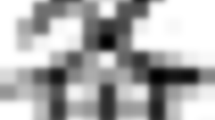Abstract
This paper describes a system to recognize disconnected handwritten numerals based on the concept of fuzzy logic and discriminating local features extracted from numeral images. Initially, the skeleton of an unknown numeral is obtained and decomposed into several segments called branches. The branches, due to their nature, present fuzzy characteristics in terms of their straightness and orientation. Precisely the three fuzzy sets were defined and used to classify branch segments into straight line segments, parts of circles and circles. The membership grade functions are built for character branches and their values are computed for the sequences of pattern branch features which represent numerals. A numeral image is classified to sequence of branch pattern features with the largest overall membership value. In the case of tie, some local topological features such as the number and the position of end points, intersection points and bend points, are used for the classification.
Work supported by São Paulo State Foudantion - FAPESP
Preview
Unable to display preview. Download preview PDF.
Similar content being viewed by others
9 References
C. Arcelli and G. S. Di Baja. “A thinning Algorithm Based on Prominence Detection”. Pattern Recognition, Vol. 113, N° 3, pp. 225–235, 1981.
Al-yousefi, H. S. Udpa. “Recognition of Arabic Characters”. IEEE-Trans. Syst., Man and Cybernetics, Vol. 14, N° 8, 195, 1992.
G. Baptista and K. M. Kulkarni. “A High Accuracy Algorithm for Recognition of Handwritten Numerals”. Pattern Recognition, Vol. 21, n° 4, pp. 287–291, 1988.
K. Fukushima and S. Miyake. ”Neocognitron: A New Algorithm for Pattern Recognition Tolerant of Deformations and Shifts in Position”. Pattern Recognition, Vol. 15, pp. 455–469,1982.
J. T. Tou and R. C. Gonzalez. “Recognition of Handwritten Characters by Topological Feature Extraction and Multilevel Categorization”. IEEE Trans Comput., vol. C-21, pp. 776–785, July 72.
T. Pavlidis and F. Ali. “Computer Recognition of Handwritten Numerals by Polygonal Approximations.” IEEE-Trans. Syst., Man, Cybernetics, Vol. SMC-5, No pp.610–614, November, 1975.
W. Pedrycz. “Fuzzy Sets in Pattern Recognition: Methodology and Methods”. Pattern Recognition, Vol.23, N° 1/2, pp. 121–146,1990.
M. Shridar and A. Badreldin. “High Accuracy Character Recognition Algorithm Using Fourier and Topological Descriptors”. Pattern Recognition, Vol. 17, No5, pp.515–524,1984.
P Siy and C. S. Chen. “Fuzzy Logic for Handwritten Numeral Character Recognition”. IEEE-Trans. Systems, Man, and Cybernetics, November, 1974.
G. Wang and J. Wang. “A New Hierarchical Approach for Recognition of Unconstrained Handwritten Numerals”. IEEE Trans. Consumer Electronics, Vol. 40, N° 3, 165 August, 1994.
Author information
Authors and Affiliations
Editor information
Rights and permissions
Copyright information
© 1997 Springer-Verlag Berlin Heidelberg
About this paper
Cite this paper
Goures, N.R., Luan Ling, L. (1997). Handwritten numeral recognition via fuzzy logic and local discriminating features. In: Murshed, N.A., Bortolozzi, F. (eds) Advances in Document Image Analysis. BSDIA 1997. Lecture Notes in Computer Science, vol 1339. Springer, Berlin, Heidelberg. https://doi.org/10.1007/3-540-63791-5_17
Download citation
DOI: https://doi.org/10.1007/3-540-63791-5_17
Published:
Publisher Name: Springer, Berlin, Heidelberg
Print ISBN: 978-3-540-63791-2
Online ISBN: 978-3-540-69646-9
eBook Packages: Springer Book Archive




